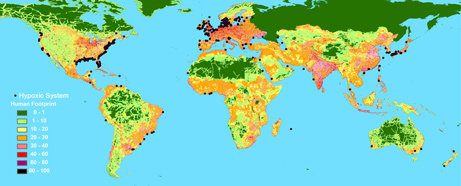Children are just imitating their parents and society.
“Not all who wander are lost” (J. R. R. Tolkien), but those who have lost contact with nature are truly lost.
________________________________________________________________________________

Children have lost touch with the natural world and are unable to identify common animals and plants, according to a survey.
Half of youngsters aged nine to 11 were unable to identify a daddy-long-legs, oak tree, blue tit or bluebell, in the poll by BBC Wildlife Magazine. The study also found that playing in the countryside was children’s least popular way of spending their spare time, and that they would rather see friends or play on their computer than go for a walk or play outdoors.
The survey asked 700 children to identify pictured flora and fauna. Just over half could name bluebells, 54 per cent knew what blue tits were and 45 per cent could identify an oak. Less than two-thirds (62 per cent) identified frogs and 12 per cent knew what a primrose was.
Children performed better at identifying robins (95 per cent) and badgers, correctly labelled by nine out of 10.
Sir David Attenborough warned that children who lack any understanding of the natural world would not grow into adults who cared about the environment. “The wild world is becoming so remote to children that they miss out,” he said, “and an interest in the natural world doesn’t grow as it should. Nobody is going protect the natural world unless they understand it.”
Fergus Collins, of BBC Wildlife Magazine, said the results “reinforce the idea that many children don’t spend enough time playing in the green outdoors and enjoying wildlife – something older generations might have taken for granted”.
A surprisingly large number of children incorrectly identified the bluebells as lavender, and the deer was commonly misidentified as an antelope.
The newt, recognised by 42 per cent, was mistaken for a lizard while the primrose was thought to be a dandelion.
Experts blamed the widening gulf between children and nature on over-protective parents and the hostility to children among some conservationists, who fear that they will damage the environment. They said that this lack of exposure to outdoor play in natural environments was vital for children’s social and emotional development.
Dr Martin Maudsley, play development officer for Playwork Partnerships, at the University of Gloucestershire, said that adults had become too protective of wild places: “Environmental sensitivities should not be prioritised over children.”
He said: “Play is the primary mechanism through which children engage and connect with the world, and natural environments are particularly attractive, inspiring and satisfying for kids. Something magical occurs when children and wild spaces mix.”
By Sarah Cassidy, Education Correspondent
Friday, 1 August 2008
Source: The Independent















